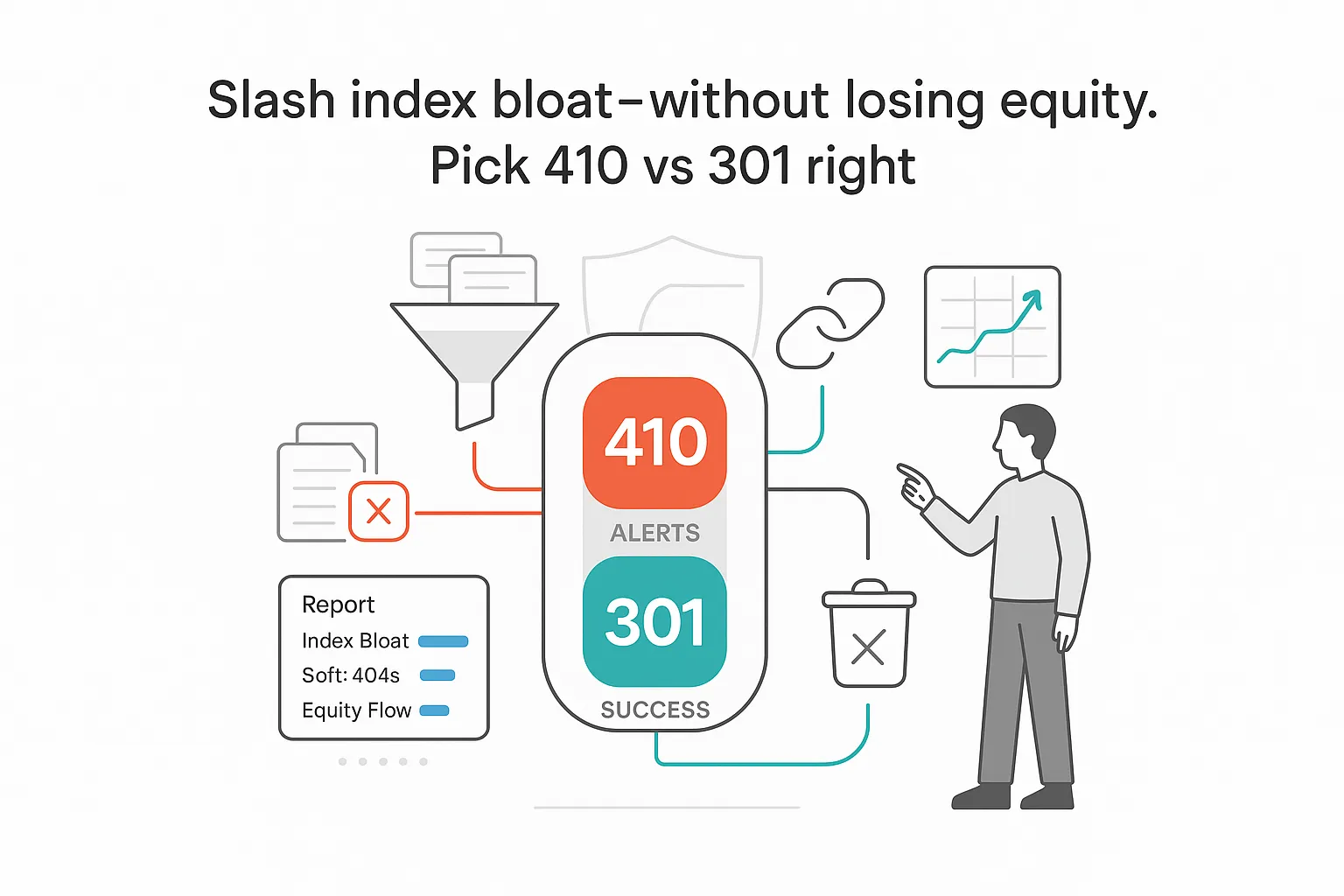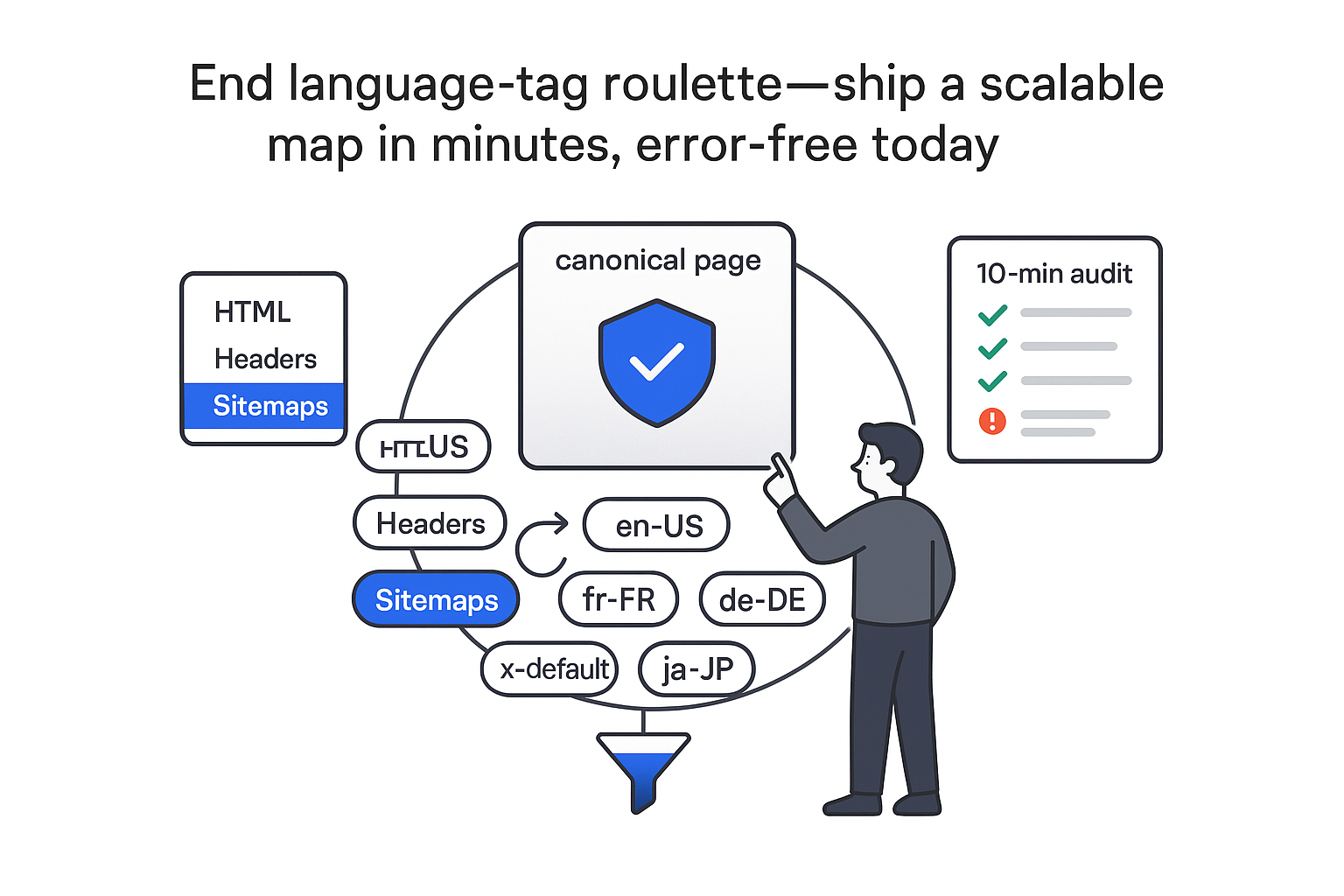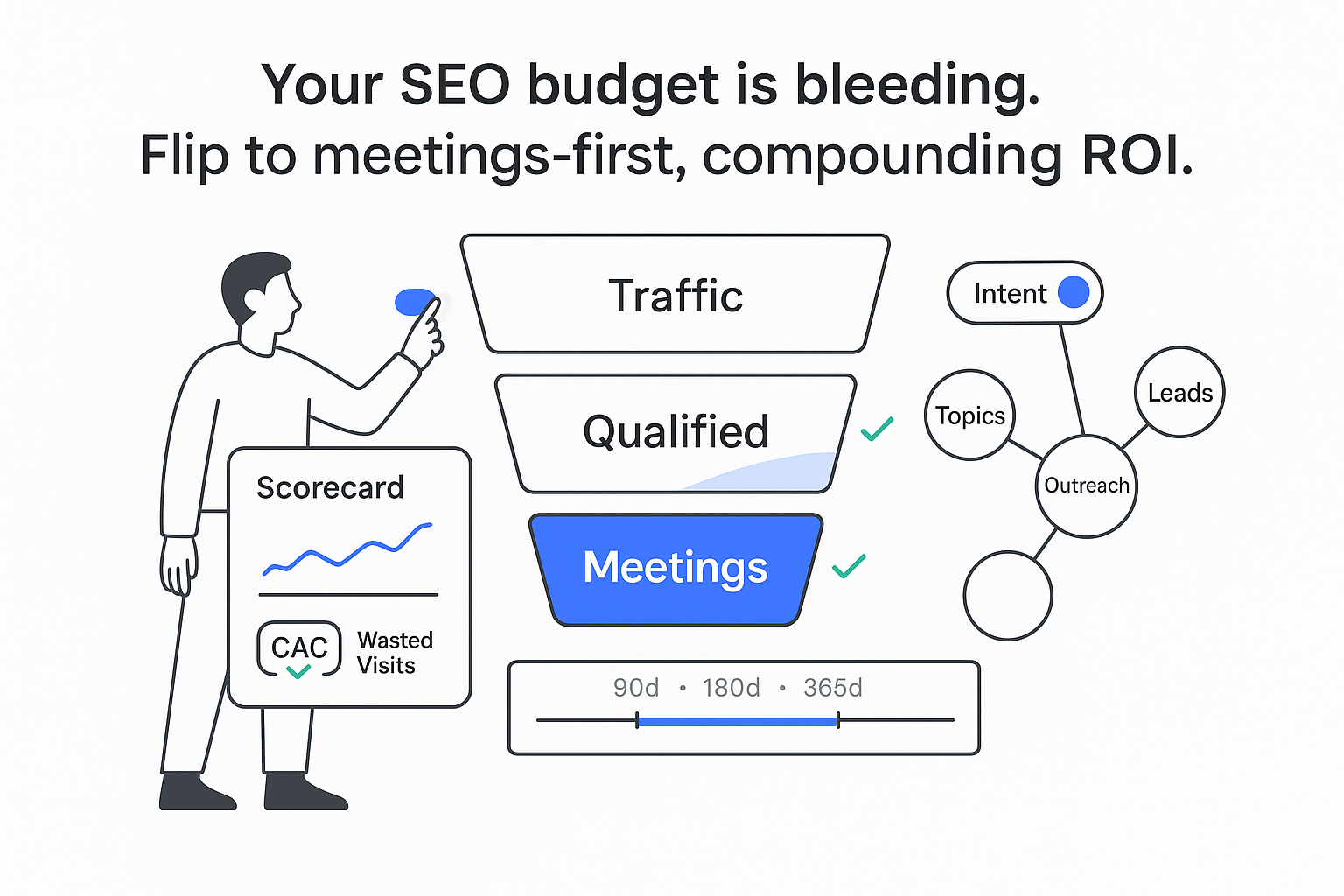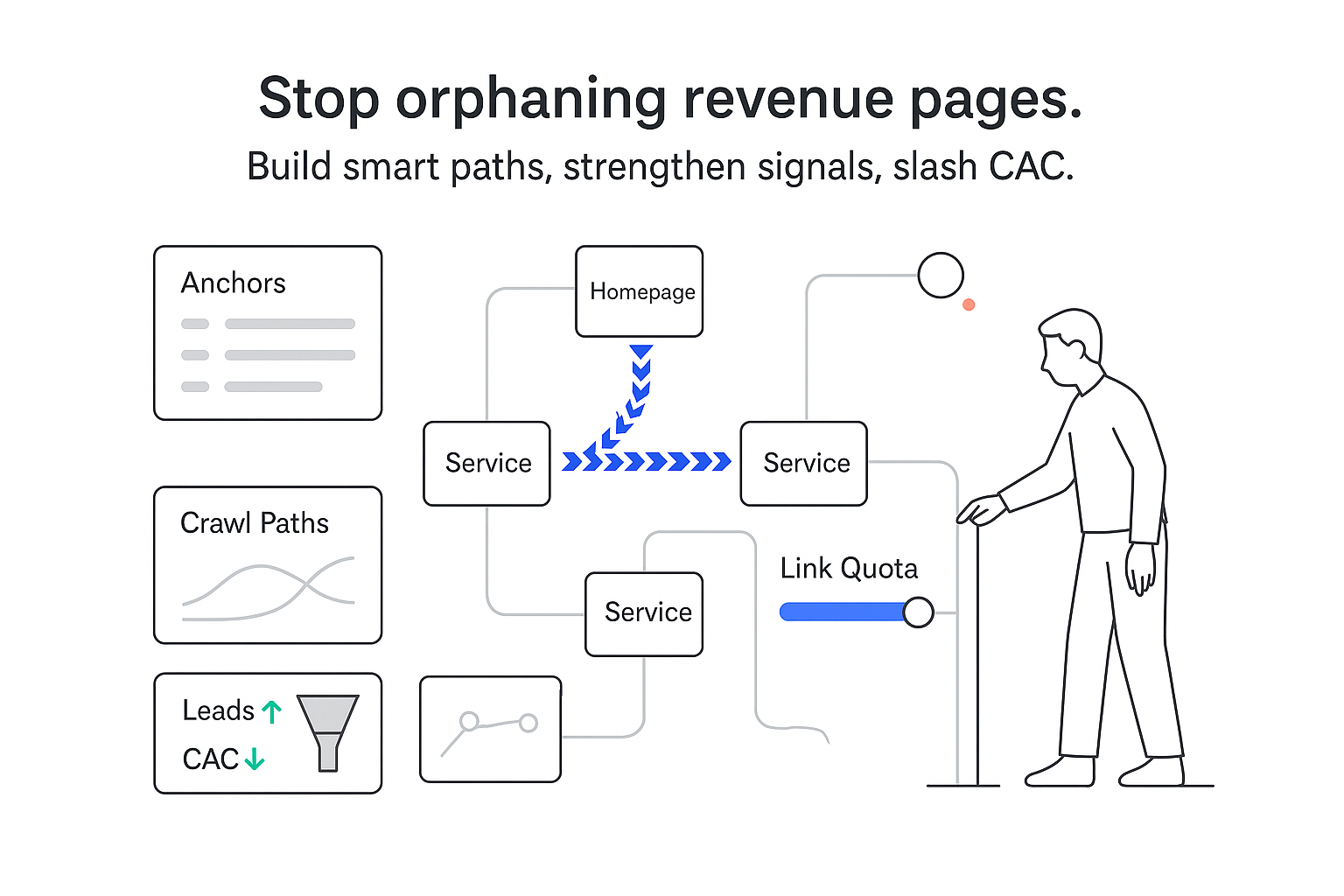Cleaning up old content can feel risky. I understand the worry about losing rankings or breaking links. Yet for B2B service companies, a tidy index leads to cleaner reporting, faster crawling, and a pipeline that reflects who you are now. The real tension sits in a simple fork in the road: 410 vs 301. Choose well and you protect equity while removing dead weight. Choose poorly and you create soft-404s, redirect chains, and noise that slows growth.
410 vs 301 | Recommendations
- I use 301 for moved or merged content to preserve link equity and continuity.
- I return 410 for permanently removed or irrelevant content to speed up deindexing.
- I leave 404 if the change is uncertain or temporary while I evaluate.
My one-sentence rule for busy B2B CEOs: “If it ever had quality links or conversions, I 301; if not and it’s gone for good, I 410.”
Simple decision flowchart
Start
|
v
Was the URL driving quality links or conversions?
|-- Yes --> Is there a close topical match or replacement?
| |-- Yes --> 301 to that specific page
| |-- No --> Refresh or rebuild, then 301
|
|-- No --> Is the content permanently irrelevant or retired?
|-- Yes --> Return 410 (Gone)
|-- No --> Keep 404 while you decide or update
What not to do
- Do not use 302 for permanent moves.
- Do not 301 everything to the homepage.
- Avoid redirect chains and loops at all costs - read up on a redirect loop if you are unsure why.
A quick note on soft-404s. If I 301 an old URL to a weak or unrelated page, Google can treat that target as a soft-404. That wastes crawl budget and muddies signals. I either map redirects to the closest match or do not redirect at all.
Why use a 410 status | Recommendations
410 is a status code, not a literal redirect. It tells browsers and crawlers that the content is gone on purpose. That clarity matters. Google’s documentation notes that 404 and 410 are handled similarly; in practice, I often see 410 lead to faster cleanup, especially when retiring batches of irrelevant URLs.
Why 410 works well
- Faster deindexing: While Google groups 404 and 410 behavior, 410 is a crisper retirement signal and can speed removal.
- Less index bloat: I avoid keeping dead pages in the long tail of results.
- Better crawl efficiency: Bots stop rechecking dead URLs, freeing crawling for current content. (For many B2B sites, crawl budget is not the bottleneck, but reducing wasted checks still helps.)
- Cleaner user signals: I avoid sending users to weak, unrelated pages just to dodge a 404 report.
Good use cases in B2B
- Permanently retired services and solution lines.
- Expired events, webinars, and limited programs.
- Outdated pricing or feature pages that no longer reflect the model.
- Thin or unfixable posts that add no value after a fair audit.
- Compliance and removal scenarios where full deletion is the right move.
Visualizing index bloat shrinking after 410s
Before: [########################] many stale URLs in index
After : [############## ] fewer, higher quality URLs
I often see a short-term rise in 404 or 410 counts in Search Console. That is expected. If the retirements were intentional, I let those reports stabilize and monitor Coverage and Crawl Stats to confirm fewer repeated crawls of dead URLs.
Why use a 301 redirect | Recommendations
A 301 passes authority and keeps relevance connected. I use it when a page moved, was consolidated into a stronger guide, or when a service was rebranded but the substance remained. It is the continuity move.
Practical mapping rules
- Redirect to the closest topical match, not to the homepage or a generic category.
- Keep it one hop. Avoid chains and loops, which weaken signals and slow pages.
- Prefer 301 for permanent moves. Reserve 302 or 307 for short-term tests or outages. 308 is a modern, method-preserving variant and is fine for permanent moves.
Common B2B patterns
- Multiple short tips posts merged into one pillar. I 301 each old post to the pillar section that matches.
- A service renamed, with scope unchanged. I 301 the old URL to the new service page.
- A regional service rolled into a national page. I 301 region URLs to the relevant section of the national page with anchors.
Measurement that keeps everyone honest
- I track target URL rankings and impressions in Search Console.
- I watch GA4 for organic sessions, engaged time, and assisted conversions after the switch.
- I check backlink tools for link counts on the target URL, since equity should consolidate there.
- I expect consolidation to settle over multiple crawls (often 4 to 8 weeks).
How I remove web posts with a 410 status | Recommendations
Here is a clear path that balances speed and accuracy.
1) Audit and decide
- Pull each URL’s data: organic sessions, referring domains, assisted conversions, and internal links.
- Decide 301 vs 410 using the rule above. If a URL has quality links or conversion history, I aim for 301 to a close match. If not, and the content is gone for good, I use 410.
2) Implement the 410 at the server or app level
- WordPress
- Redirection plugins can add a “410 Gone” action per URL or pattern.
- Popular SEO plugins support 410 responses for deleted posts - for example, Yoast SEO Premium includes a redirects manager.
- HubSpot
- Native redirects default to 301. If a true 410 is required, I remove the page (temporary 404) and work with dev to set a 410 at the edge.
- Shopify
- Native URL redirects are 301 only. For retired content, I 301 to the closest relevant page and remove it from navigation; if 410 is required, I use a proxy or edge worker.
- CDN or edge
- Cloudflare Worker example:
addEventListener('fetch', event => { const url = new URL(event.request.url) if (url.pathname === '/old-url') { event.respondWith(new Response('Gone', { status: 410 })) } else { event.respondWith(fetch(event.request)) } }) - Fastly VCL or Akamai rules can set 410 based on path matching.
- Cloudflare Worker example:
- Apache
# Simple one-off Redirect gone /old-url # Or with mod_rewrite RewriteEngine On RewriteRule ^old-url$ - [G=410,L] - Nginx
location = /old-url { return 410; }
3) Clean signals
- Remove retired URLs from XML sitemaps (keep sitemaps 200-only).
- Update or remove internal links that point to retired content.
- Keep breadcrumbs and navigation clean so users do not hit dead ends.
4) Speed up removal
- Use Search Console’s Removals tool for short-term hiding (typically about 6 months) while 410s take effect.
- Submit a small batch of affected URLs for re-crawl with Inspect URL.
5) QA and monitoring
- Test with curl:
Confirm “HTTP/1.1 410 Gone” or similar.curl -I https://www.example.com/old-url - Review server and CDN logs to ensure the right status is served to both users and bots.
- Watch Search Console Coverage and Crawl Stats over 4 to 8 weeks. Crawls of retired paths should taper.
Tip: I group rules by folder when possible, for example, “/events/2019/”. Pattern-based 410s avoid hundreds of single entries while keeping control.
Website response codes | Recommendations
A fast, skimmable refresher
- 200: OK. The page is live.
- 301: Permanent redirect. Move equity and users to the new URL.
- 302 or 307: Temporary. Use for short tests or outages, not for permanent moves.
- 308: Permanent, method-preserving redirect. Fine as a modern 301 variant.
- 404: Not found. Might be a typo, a broken link, or content removed without a clear signal.
- 410: Gone. The content is removed on purpose.
- 451: Unavailable for legal reasons. For compliance takedowns.
404 vs 410
- Both lead to removal over time. 410 is a crisper retirement signal and can accelerate cleanup.
- If I am unsure, a short period of 404 is fine while I evaluate.
Soft-404 pitfalls
- If I 301 a URL to an irrelevant page, Google can treat the target as a soft-404. Result: weak indexing and wasted crawling.
- Canonical is not a redirect. rel=canonical hints; a 301 enforces. When I need consolidation, a 301 is the cleaner choice.
- Very thin or mismatched content can also be classified as soft-404 even without redirects.
Does deleting old blog posts hurt SEO? | Recommendations
It can hurt if I remove pages that could be refreshed or consolidated. It can help if I retire noise and keep the index focused on pages that win. The keys are data, mapping, and restraint.
A practical pruning framework
- Update if the topic has clear demand and real links, and can be brought current without contortions.
- Consolidate if multiple posts overlap. Keep the strongest, fold the rest into it, then 301.
- 301 if the URL has equity or conversion history and a close successor exists.
- 410 if the URL has no equity, adds no value, and is gone for good.
Simple thresholds that help a busy team move fast
- 0 to 10 organic sessions in 6 months.
- 0 quality referring domains.
- 0 assisted conversions, phone calls, booked demos, or form starts.
- No current internal links from money pages.
When two or more of these are true, that URL is a strong 410 candidate - unless it fills a niche I still need.
Quality over volume matters in B2B
- One page that converts is better than 20 that only bring vanity clicks.
- Consolidation can raise topical authority, which helps rankings sitewide.
- Deleting noisy posts can improve crawl efficiency, so new service pages get picked up faster during budget season or a new product push.
Current trend worth noting
Many sites added lots of quick AI posts in 2023 and 2024. If those pieces never earned links or conversions, I do not get sentimental. I refresh the few worth saving, 301 the rest into stronger assets, and 410 the dead weight. If you are producing with tools like ChatGPT, focus on quality and differentiation so you are not pruning tomorrow what you publish today.
Should you delete old blog posts? | Recommendations
Here are decision criteria I apply without hand-holding.
- Check SERP intent. Does the page match what searchers want today? If not, refresh or consolidate. If there is no fit, 410.
- Review backlink quality. Keep and 301 anything with strong, relevant links. Ignore spam links in this call.
- Assess recency. Can the piece be updated for 2025 with credible sources and unique insights? If yes, refresh.
- Inspect internal link dependencies. Do any key pages rely on this URL? If yes, rewire internal links before retiring it.
- Follow the conversion path. If the page played a part in a deal, do not delete blindly. Either update it or 301 to a richer resource.
Examples to ground the call
- Old announcement posts or past hiring updates. 410.
- Outdated tactics from 2020 that still have demand. Refresh and republish with current screenshots and data.
- Five short posts about one theme. Merge into a pillar page or guide, then 301 all five to the new page.
- Retired pricing experiments. If no links and no conversions, 410. If linked from partners or press, archive the context and 301 to the current pricing explainer.
Governance that keeps accountability high
- I run quarterly pruning sprints with a clear owner.
- I keep a change log with URL, action taken, rationale, and date.
- I recheck results 30, 60, and 90 days later and adjust mappings if the data suggests a better target.
TL;DR: 410 status vs 301 | Recommendations
- Use 410 for content that is gone for good and adds no value.
- Use 301 for moved or merged content, mapped to the closest topical match.
- Do not 301 to the homepage. Keep it relevant or do not redirect.
- Remove retired URLs from XML sitemaps and fix internal links that point to them.
- For faster cleanup, submit temporary removals in Search Console while 410s settle.
- Monitor Coverage, Crawl Stats, and target URL rankings for 4 to 8 weeks.
- Keep redirects one hop. Kill chains and loops before they start.
Mini decision flow
Links or conversions?
|-- Yes --> 301 to best match
|-- No --> Permanently irrelevant?
|-- Yes --> 410
|-- No --> Update or keep 404 while you decide
Final thought for operators: deleting can feel counterintuitive, yet it often clears space for the work that actually wins. Clean index. Clean structure. Clean reporting. Your future pipeline will thank you.







.svg)